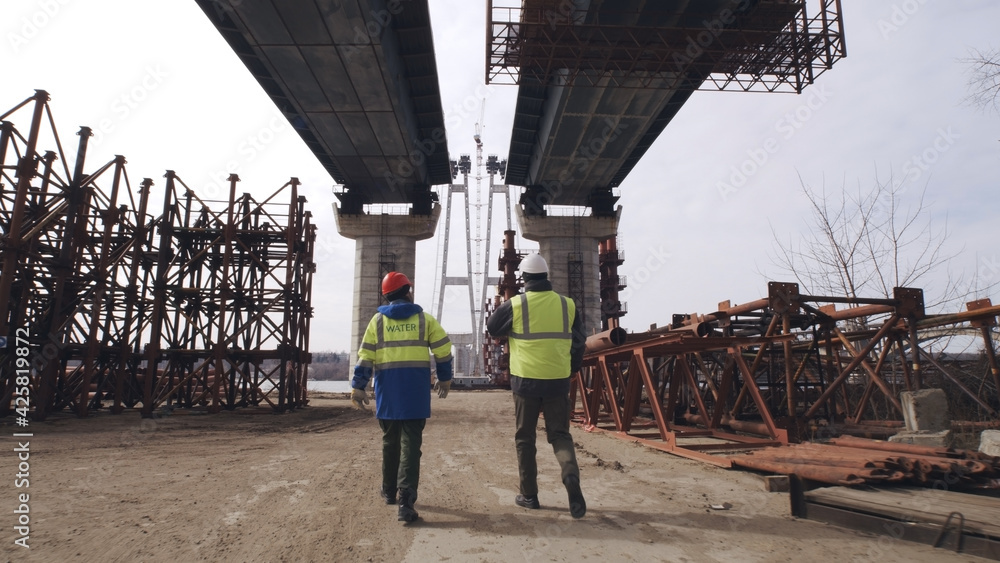
Dr. Jeffrey Bullard, Professor in Civil & Environmental Engineering and Materials Science & Engineering and a preeminent researcher in Infrastructure Materials at CIR is the lead PI from TEES and TAMU on a new University Transportation Center (UTC), “Innovative Bridge Technologies & Accelerated Bridge Construction.” This is one of the eight UTC’s that the United States Department of Transportation (USDOT) announced grant awards for the 2022-2026 Program. Florida International University (FIU) leads the IBT/ABC UTC. Along with TEES, UTC partners include Florida A&M University, University of Georgia, University of Nevada Reno, University of Oklahoma, and University of Washington.
The need for this UTC focused on IBT/ABC is evident when considering the current state of our nations’ bridges. According to the ASCE’s 2021 Infrastructure Report Card, the nation’s bridge score was a C, and 42% of all bridges are at least 50 years old, with the average age being 44 years old. In addition, 7.5% of all bridges are considered structurally deficient, meaning they are in “poor” condition. According to the FIU’s ABC UTC website, the mission of the IBT/ABC UTC is “to reduce the societal costs of bridge construction by reducing the duration of work zones, focusing special attention on preservation, service life, construction costs, education of the profession, safety and development of a next-generation workforce fully equipped with IBT/ABC knowledge.”

“Our nation’s bridges greatly need more durable and sustainable construction materials, more efficient construction and repair methods, and more effective asset management practices. I expect this UTC to help meet all three of those needs,” says Dr. Bullard. He believes that the UTC’s mission and those needs closely aligned with the resources we have to offer here at the CIR and TAMU. “Our universities and lead investigators have a wealth of resources and backgrounds in these research areas and have already demonstrated the kind of teamwork and leadership required to meet these goals.”
Research, education, workforce development and technology transfer are also some of the UTC’s main objectives. A noteworthy tactic they implement is their development and national distribution of K-12 educational material related to bridge engineering to educate and attract future generations to transportation and sustainability engineering fields. Dr. Bullard notes that the UTC gives a similar, more in depth opportunity to TAMU graduate students as well. He states that “this UTC provides an opportunity to infuse our graduate students with a sense of the excitement and urgency of being at the forefront of nationwide efforts to modernize bridge engineering practices. These students are our country’s future engineering leaders, and they will need that combination of forward-thinking creativity and pragmatic construction practice expertise that this UTC will foster.”
One way to combat the poor conditions of the nation’s bridges is to develop materials that can reach longer lives while still maintaining high performance throughout their use. Texas A&M’s focus on this UTC will be just that. Dr. Bullard and his team will be researching the “development of low-carbon concrete materials for bridges and on enabling ultrahigh performance concrete for additive manufacturing of bridge components” and he says that the CIR has “one of the nation’s best collections of laboratories for developing, processing, and characterizing these kinds of materials.”

Dr. Anand Puppala, Director of CIR, is delighted to see this UTC research being conducted the CIR. “This IBT/ABC UTC is one of the five major UTCs that work on infrastructure track at CIR,” he says, “I greatly appreciate the efforts by Professor Bullard in bringing this important bridge infrastructure center with focus on materials to CIR.” The CIR’s Laboratory for Advanced Characterization of Infrastructure Materials (ACIM) and the Concrete Innovation Laboratory will be two of the labs utilized for the UTC at Texas A&M. These labs feature high-precision equipment for investigating materials’ thermal and kinetic properties as well as monitoring their response to controlled environmental variables like temperature, relative humidity, and carbon dioxide partial pressure in the atmosphere.
For more information regarding this UTC at FIU, click here.
For a list of all the affiliated UTC’s in the 2022-2026 Program, click here.
For more information regarding the ACIM & Concrete Innovation Labs please visit cir.tamu.edu
 Anyone who’s ever moved knows there are a thousand little things to worry about. Should we keep this item? How are we going to move that thing!? Can we fit everything into this new space?
Anyone who’s ever moved knows there are a thousand little things to worry about. Should we keep this item? How are we going to move that thing!? Can we fit everything into this new space?


